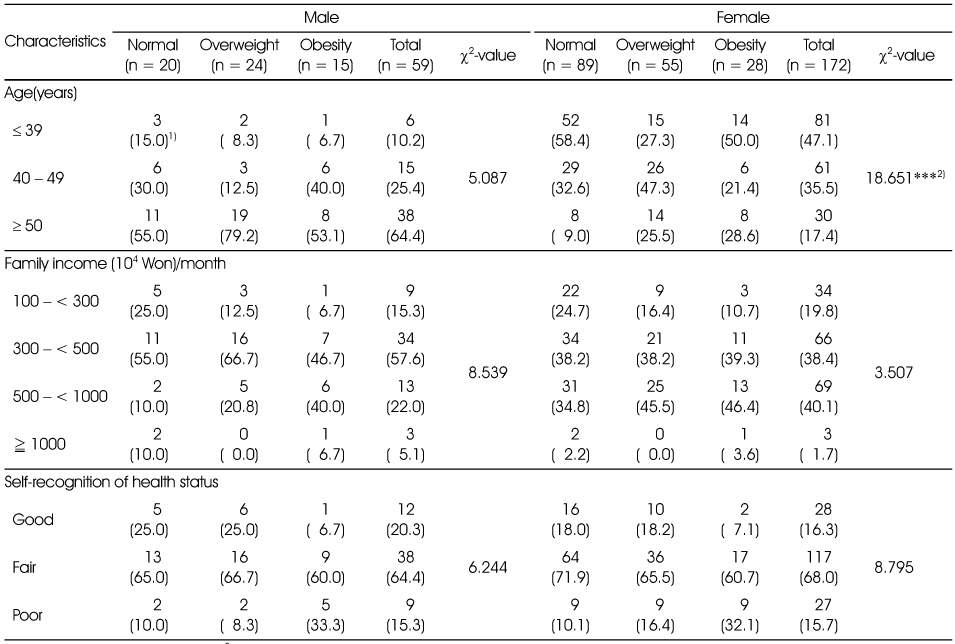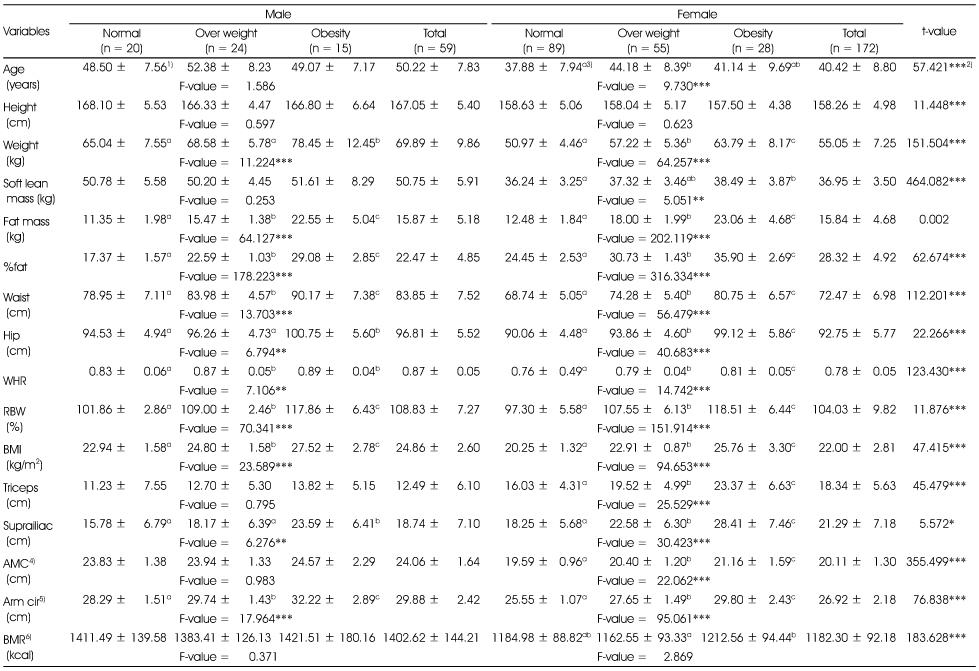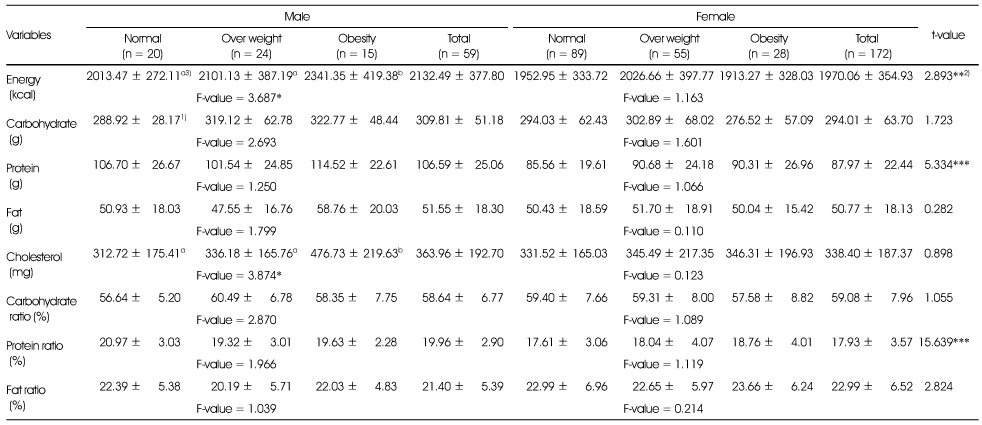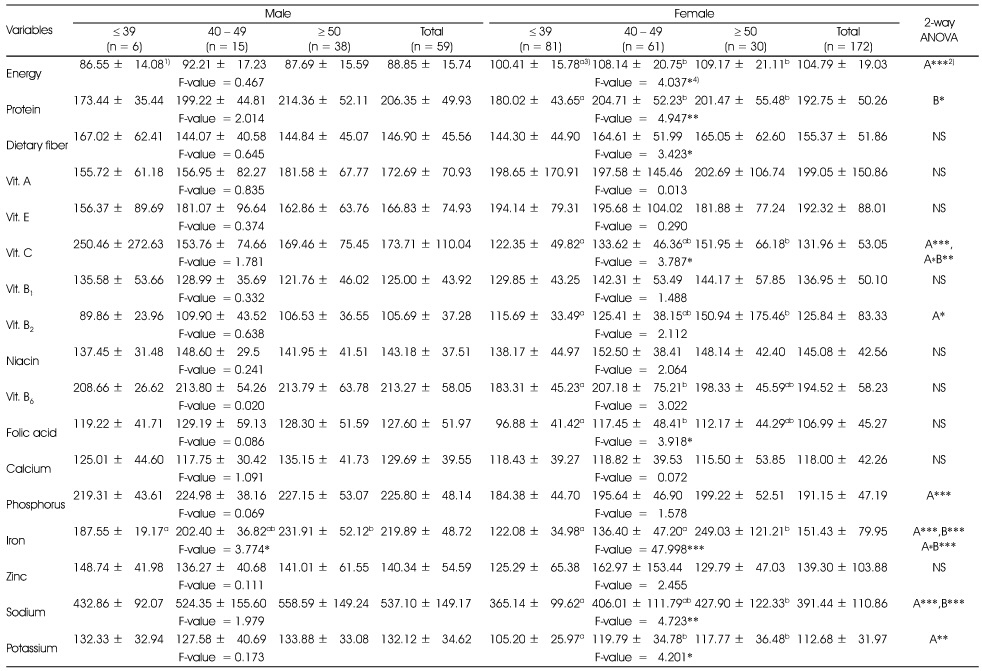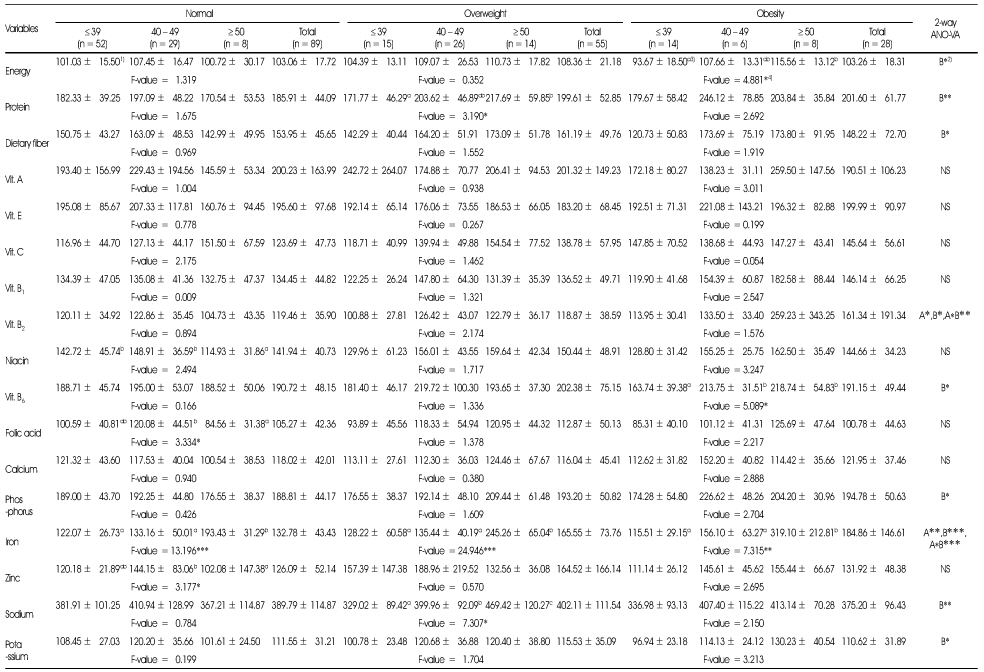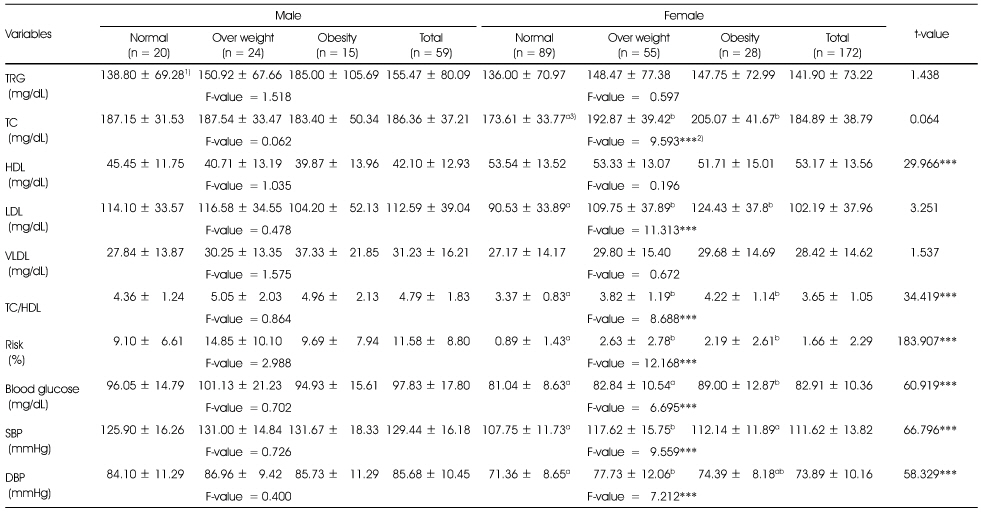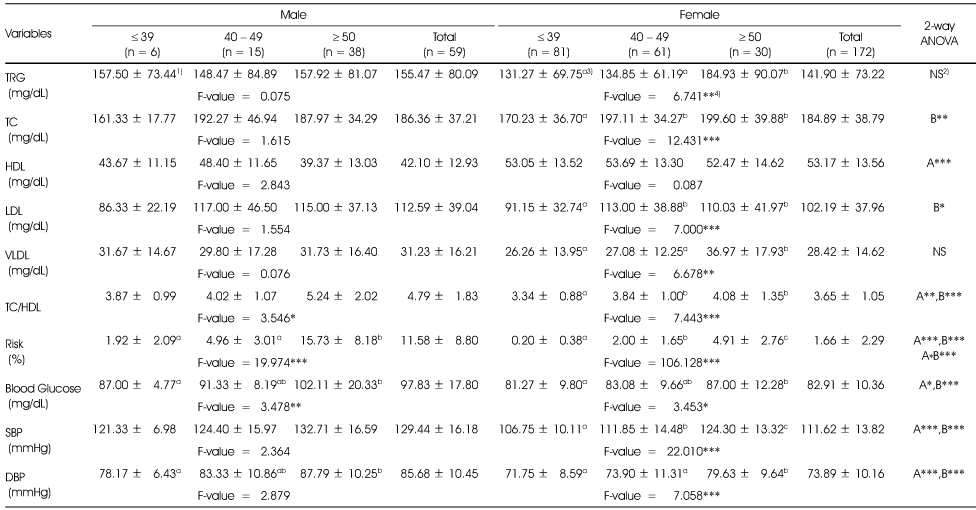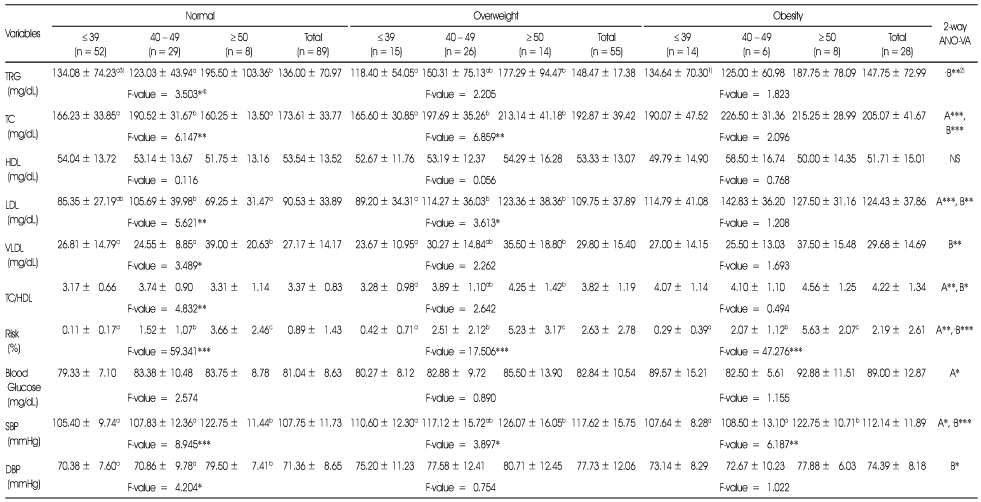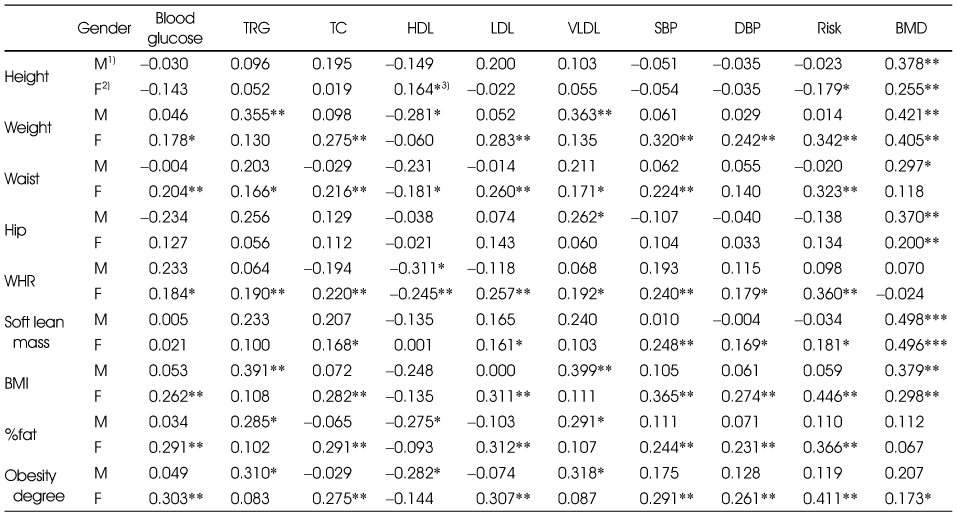References
1. Albala C, Yanez M, Devoto E, Sostin C, Zeballos L, Santos JL. Obesity as a protective factor for postmenopausal osteoporosis. Int J Obes Relat Metab Disord 1996. 201027–1032.
2. Biospace. Examination of body composition. Diagnosis and measure of obesity 2004. Seoul: Biospace;
3. Chang HS. Nutrient intakes and blood lipids according to obesity degree by body fat percentage among middle-aged women in Gunsan city. Korean J Community Nutr 2010. 15(1)15–26.
4. Cho SH. The relationship between bone mineral density and body composition variables measured by DEXA in postmenopausal women. J Korean Acad Fam Med 2005. 26158–166.
5. Choi MJ. Relations of life style, nutrient intake and blood lipids in middle-aged men with borderline hyperlipidemia. Korean J Community Nutr 2005. 10(3)281–289.
6. Choi MK, Jun YS. Comparative study of energy intake, blood pressure, and serum lipids by body mass index in Korean adults. J Korean Diet Assoc 2007. 13(1)30–37.
7. Choi YJ, Joh HK, Oh SW, Lym YL, Choi JK, Do HJ. Association between bone mineral density and obesity, waist circumference in premenopausal and postmenopausal women. Korean J Health Promot Dis Prev 2007. 7187–195.
8. Hsu YH, Venners SA, Terwedow HA, Feng Y, Niu T, Li Z. Relation of body composition, fat mass, and serum lipids to osteoporotic fractures and bone mineral density in Chinese men and women. Am J Clin Nutr 2006. 83146–154.
9. Hwangbo JH, Son YA, Shin SR, Yoon KS, Kim KS. Studies on the food & daily habits and lipid concentrations in serum of adult man. Food Ind Nutr 2002. 7(2)45–50.
10. Hyun WJ. The relationship between obesity, lifestyle, and dietary intake and serum lipid level in male university students. Korean J Community Nutr 2001. 6(2)162–171.
11. Jung YS, Choi MK. Studies of nutrient intake, life style, and serum lipids level in middle-aged men in Taegu. Korean J Nutr 1997. 30(3)277–285.
12. Jun YS, Choi MK, Bae YJ, Sung CJ. Effect of meals variety on obesity index, blood pressure, and lipid profiles of Korean adults. Korean J Food Cult 2006. 21(2)216–224.
13. Kim KJ, Lee WJ, Lee SJ, Ahn NY, Oh HR, Shin YJ, Park JS, Hong CB, Kim SH, Kim EM, Lee JU, Kim EJ, Jang JS. Health status and lifestyle including diet, exercise, and daily activities in obese adults. Korean J Sports Med 2005a. 23(1)54–63.
14. Kim KJ, Shin YJ. Analysis of indicators for the evaluation of obesity and body fat distribution in adult men. J Korea Sport Res 2003. 14(5)1529–1540.
15. Kim MS, Koo JO. Analysis of factors affecting bone mineral density with different age among adult women in Seoul area. Korean J Community Nutr 2007. 12(5)559–568.
16. Kim MS, Koo JO. Comparative analysis of food habits and bone density risk factors between normal and risk women living in Seoul area. Korean J Community Nutr 2008. 13(1)125–133.
17. Kim OH, Jung HN, Kim JH. Comparison of food intakes and serum lipid levels in overweight and obese women by Body Mass Index. Korean J Community Nutr 2007. 12(1)40–49.
18. Kim SH, Kim JH, Lee CH. An effect of difference in %body fat on cardiovascular system upon incremental treadmill exercise testing. Korean J Phys Educ 2003. 42(3)571–580.
19. Kim SY, Sohn CM, Chung WY. Effect of medical nutrition therapy on food habits and serum lipid level ofhypercholesterolemic patients. J Korean Diet Assoc 2005b. 11(1)125–132.
20. Korea Health Statistics 2009-. Korea National Health & Nutritional Examination Survey 2010. cited 2011. Aug. 15. Available from
http://www.knhanes.cdc.go.kr.
21. In-Depth Analysis on the 3rd(2005) Korea Health and Nutrition Examination Survey -Medical examination part -. Korea National Health & Nutritional Examination Survey 2007a. cited 2011. Aug. 15. Available from
http://www.knhanes.cdc.go.kr.
22. In-Depth Analysis on the 3rd (2005) Korea Health and Nutrition Examination Survey -Nutrition Survey -. Korea National Health & Nutritional Examination Survey 2007b. cited 2011. Aug. 15. Available from
http://www.knhanes.cdc.go.kr.
23. Ko SK. The effect of BMI and %Fat as an obesity index on the diagnosis of lipoprotein in adult men. Exerc Sci 2005. 14(1)21–30.
24. Kwon HT, Park JH, Lee CM, Shin CS. Relationship between bone mineral density and abdominal obesity according to BMI in postmenopausal women. Korean J Health Promot Dis Prev 2008. 8(2)102–107.
25. Lee HS, Kwon IS, Kwon CS. Prevalence of hypertension and related risk factors of the older residents on Andong rural area. J Korean Soc Food Sci Nutr 2009. 38(7)852–861.
26. Lee HS, Park MY, Kim GE, Cheong HS, Kim SH. A study on the serum lipid, apolipoprotein levels and their correlations in healthy adults of Gyeongnam area. Korean J Nutr 2007. 40(6)526–530.
27. Lee JS, Yu CH. Some factors affecting bone mineral density of Korean rural women. Korean J Nutr 1999. 32(8)935–945.
28. Lee JY, Chung SC, Cha YJ, Kwon HS, Lee SJ, Sohn IS, Kim SN. Difference in the relative contribution of body composition analysis to bone mineral density with generation in Korean women. J Korean Soc Menopause 2005. 11(3)213–218.
29. Lee RD, Nieman DC. Nutritional assessment 1996. 2nd edth ed. St. Louis: Mosby;
30. Lohman TG. Advance in body composition assessment, current issues in exercise science series 1992. Champaign, IL: Human Kinetic Publishers;
31. Moon HK, Kim EG. Comparing validity of using body mass index, waist to hip ratio, and waist circumference to cardiovascular risk factors of middle aged Koreans. J Korean Diet Assoc 2005. 11(3)365–374.
32. Moon JH, Lee JK, Lee OH, Lee SY, Kim YJ. The association between indicators of central obesity and bone mineral density in women. J Korean Acad Fam Med 2001. 22192–199.
33. Na HB. Factors affecting bone mineral density in Korean women by menopause. Korean J Community Nutr 2004. 9(1)73–80.
34. Nam KH, Shin MS, Yoo JH, Bae JJ, Lee SH, Kim SS, Hong YS, Byun JJ, Park HK. The effect of exercise program during 16 weeks on leptin, HbA1c, BMI and body composition in middle aged men with obesity and NIDDM. J Sport Leis Stud 2003. 201115–1126.
35. Schmitt SB, Wasserman AG, Muesing RA, Schlesselman SE, Larosa JC, Ross AM. Lipoprotein and apolipoprotein levels in angiographically defined coronary atherosclerosis. Am J Cardiol 1985. 55(13 Pt 1)1459–1462.
36. Sizer FS, Whitney EN. Nutrition - Concepts and controversies- 2000. 8th edth ed. USA: Wadsworth; 2–4.
37. Smalley KJ, Knerr AN, Kendrick ZV, Colliver JA, Owen OE. Reassessment of body mass indices. Am J Clin Nutr 1990. 52405–408.
38. Solomon CG, Manson JE. Obesity and mortality: a review of the epidemiologic data. Am J Clin Nutr 1997. 664 suppl. 1044S–1050S.
39. The results statistical death and cause of death. Statistics Korea 2010. cited 2011. Aug. 15. Available from
http://www.kostat.go.kr.
40. Suh JM, Cho SB. Blood lipid profiles following to abdominal fat in middle-aged men. J Korea Sport Res 2004. 15(3)1596–1604.
41. The Korean Nutrition Society. Ministry of Health & welfare. Korea Food & Drug Administration. Dietary reference intakes for Korean (KDRIs) 2010. Seoul: The Korean Nutrition Society; 579–583.
42. Wang J, Thornton JC, Russell M, Burastero S, Heymsfields . Asians have lower percent body fat than whites : Comparisons of anthropometric measurements. Am J Clin Nutr 1994. 6023–28.
43. Yoo HS, Park SH, Byun JC. Effects of aerobic exercise training on inflammatory markers and t-PA and cholesterol levels in obese men. Korean J Phys Educ 2005. 44(4)325–335.
44. Zhao LJ, Liu YJ, Liu PY, Hamilton J, Recker RR, Deng HW. Relationship of obesity with osteoporosis. J Clin Endocrinol Metab 2007. 921640–1646.
